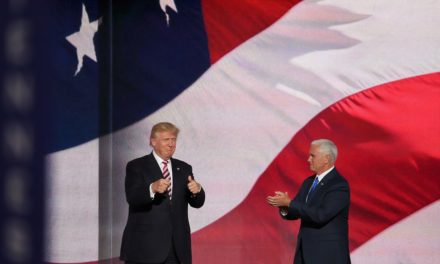It was announced Monday by the Trump administration that one of the USA’s bedrock conservation laws, the Endangered Species Act, will be weakened under the banner of making it more flexible and receptive to the demands of industry and economic growth.
The changes, which have been anticipated for some time, will for the first time in the law’s history put cost above science, although supporters of the changes say they will reduce red tape and allow for economic investment in areas which are often remote with little employment opportunities.
“The revisions finalized with this rulemaking fit squarely within the president’s mandate of easing the regulatory burden on the American public, without sacrificing our species’ protection and recovery goals,” Commerce Secretary Wilbur Ross said in a statement.
The new rules are expected to go into effect next month, but there are widespread concerns that the changes will seriously weaken environmental protections for threatened species.
The changes that alarmed conservationists were the removal of long-term predictions involving climate change and the way in which regulators would be able to conduct economic assessments on a particular habitat.
Whereas previously habitat assessments were based on science alone, now if there is an economic claim on a piece of land then potential lost revenue will be taken into account. So, for example logging which may have been banned previously, may now be permitted resulting in huge habitat destruction.
Previously the law stated that decisions must be made “without reference to possible economic or other impacts of determination.”
Those behind the changes insist this phrase has been removed from the act for the purposes of “transparency”. Gary Frazer, the assistant director for endangered species with United States Fish and Wildlife Service, insisted that economic considerations will now be considered and that decisions about if a species is endangered or not would still be based only on science.
But environmental groups believe that these changes represent a fundamental risk to species.
Science in a Straitjacket
“There can be economic costs to protecting species. If we make decisions based on short-term economic costs, we’re going to have a whole lot more extinct species,” Drew Caputo, vice president of litigation for lands, wildlife and oceans at Earthjustice, an environmental law organization, told the New York Times.
The changes to the Endangered Species Act are in direct contradiction to recent reports by the UN and other scientific institutions. A recent UN study said that one million species will be pushed to extinction because of the human destruction of ecosystems and climate change.
But the amended act will now make it much harder to protect species from the effects of climate change because now regulators will not be able to make future predictions on how climate change will affect particular species.
According to David Hayes, who served in Obama’s administration and is now executive director of the State Energy and Environmental Centre at the New York University School of Law, this change will effectively put scientists in a “straitjacket” by forcing them to take climate change out of consideration when working out how best to protect wildlife.
This will make it much harder for scientists to try and protect vulnerable species from drought and rising sea levels as many of these threats are decades away.
Republicans have been trying to change the act for a long time, arguing that as it stands it puts the breaks on economic growth and is a burden for landowners and industry.
Interior Secretary David Barnhardt, one of the key people behind the changes, and a former oil and gas lobbyist, said that the act needed modernising and the “act’s effectiveness rests on clear, consistent and efficient implementation.”
The vice president at the American Petroleum Institute, Erik Milito, unsurprisingly praised the changes which he said would reduce unnecessary regulations. Vast tracts of lands which hitherto had been protected will now be available for oil and gas drilling and mining.
The Endangered Species Act came into being in 1973 under President Nixon and is credited with saving the grizzly bear, the Tennessee purple Cornflower the humpback whale and the Florida Manatee.
- Why is California So at Risk from Wildfires? - 13th November 2019
- Carbon Offsetting is Growing but Does it Make a Difference? - 11th November 2019
- Three Confirmed Dead as Australia Prepares for “Catastrophic” Bushfires - 11th November 2019






